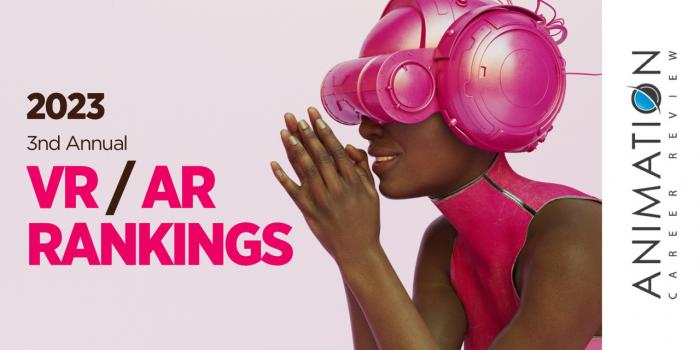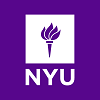Massachusetts Institute of Technology (MIT) houses a large number of academic units, departments, centers, and labs that provide numerous programs designed to support AR/VR education, projects, innovation, and research. For a foundational understanding of AR/VR, students can enroll in a certificate program through MIT’s Professional Development Division—MIT xPRO.
Course examples include Evaluating XR (Extended Reality) Systems, Producing VR and AR Experiences I-II, Game Development, XR Apps Development, and Broader Implications of XR. This fully online AR/VR Program is delivered in collaboration with Emeritus and it takes eight weeks to complete.
Schwarzman College of Computing at MIT houses the Center for Computational Science & Engineering (CCSE), and the Department of Electrical Engineering and Computer Science (EECS). CCSE is home to the Master of Science Program in Computational Science and Engineering SM Program (CSE SM). This interdisciplinary program provides the opportunity to choose electives that focus on particular applications—including AR/VR.
Hands on projects and access to MITs many centers and labs are major components of the CSE SM program. Course examples include Optimization for Machine Learning, Advances in Computer Vision, Architecting & Engineering Software Systems, Atomistic Modeling & Simulations of Materials & Structures, and Computational Cognitive Science.
The CCSE also has a Doctoral Program in Computational Science and Engineering (CSE PhD). Provided jointly across eight participating departments, the CSE PhD provides the opportunity to focus in a computation-related field, such as AR/VR, through coursework and the doctoral thesis.
The EECS Department at MIT is composed of three overlapping sub-units including artificial intelligence (AI) and decision-making (AI+D), electrical engineering (EE), and computer science (CS). The curriculum is a joint venture between the Schwarzman College of Computing and the School of Engineering. AR/VR related programs include a BS in Computation and Cognition (also provide in collaboration with the Department of Brain and Cognitive Sciences), a Minor in Computer Science (72 units), and PhD’s in Computer Science, and CS and Engineering. The PhD degree is awarded interchangeably with the Doctor of Science (ScD).
The largest undergraduate program at MIT, EECS provides intensive hands-on coursework and opportunities to engage in independent study or research for academic credit. Students in the BS program will take courses such as Perception, Robotics: Science and Systems, Advances in Computer Vision, Machine-Motivated Human Vision, AI, and Digital Systems Laboratory.
MIT labs and centers include the MIT Center for Advanced Virtuality, MIT Media Lab, and MIT.nano Immersion Lab.
The MIT Center for Advanced Virtuality brings together experts, students, and resources in a studio/laboratory environment to support research and creative projects. The Center focuses on innovation across technologies and platforms such as virtuality (XR, VR, AR, MR, etc.), videogames, social media, and others.
Founded in 1985, the MIT Media Lab is an interdisciplinary research organization that allows students, faculty, and researchers to work together on hundreds of projects across disciplines such as social robotics, physical and cognitive prostheses, new models and tools for learning, community bioengineering, models for sustainable cities, and more. The Lab also houses the graduate degree program in Media Arts and Sciences (MAS).
The MIT.nano Immersion Lab highlights activities such as developing new software and hardware concepts for immersive experiences, prototyping advanced tools for augmented and virtual reality (AR/VR), and visualizing data. The Immersion Lab connects engineers and scientists with musicians, artists, and performers through creative projects across multiple disciplines.
The Lab also produces the monthly seminar series IMMERSED, which consists of lectures, demonstrations, and tutorials that explore immersive technology and how it shapes advances across art, science, and engineering.
Graduates of the Certificate, Computer Science, and Engineering Programs at MIT are prepared to pursue positions in AR/VR, AI, Information and Technology, and many others. Some of the top employers of MIT graduates include Amazon, Google, IBM, Boeing, Apple, Microsoft, the U.S. Air Force, Meta Platforms, Inc. (Meta), and Aurora Flight Sciences.
Massachusetts Institute of Technology (MIT) was incorporated on April 10, 1861, just two days before the start of the Civil War. The school serves approximately 11,860 students from all 50 states, the District of Columbia, four territories, and 135 foreign countries. MIT provides more than 100 programs across one college (MIT Schwarzman College of Computing), Sloan School of Management, and the Schools of Architecture and Planning; Science; Humanities, Arts, and Social Sciences; and Engineering.
Massachusetts Institute of Technology is accredited by the New England Commission of Higher Education (NECHE). Engineering at MIT is accredited by the Accreditation Board for Engineering and Technology (ABET).












